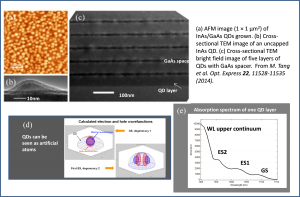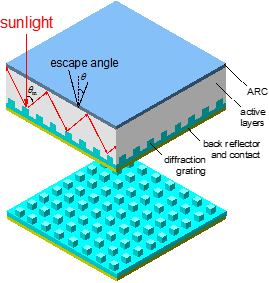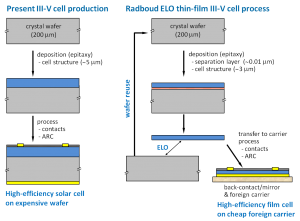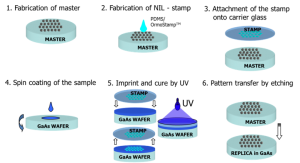The maximum theoretical efficiency of single-junction solar cells is limited by the inability to absorb photons with energy lower than the material bandgap and by the thermalisation of electron-hole pairs produced by photons with energies larger than the bandgap. For GaAs based solar cells, this turns into a Shockley-Queisser efficiency limit of about 33.5% and 40% under unconcentrated and full concentrated light, respectively.
The TFQD project will develop lightweight GaAs-based thin-film quantum dot solar cells exceeding the Shockley-Queisser limit, based on the following cornerstones:
– Thin-film design to enable low weight, flexibility and advanced design for efficiency optimization
– Use of Quantum Dots (QD) to overcome the efficiency limit of single-junction cells by harvesting a larger portion of the solar spectrum with respect to the host bulk semiconductor.
– Implementation of light trapping techniques to increase the photocurrent generation at the GaAs band edge and at the QD wavelengths and of photon recycling to suppress radiative recombination and maximize the open circuit voltage.
– Cost-effective and scalable fabrication process, suitable for further industrialization, by adopting epitaxial lift-off (ELO) technology and NanoImprint Lithography (NIL).
Device technology development will be sustained by an extensive design activity, supported by advanced numerical simulation tools.
The target efficiency of 30%, together with a reduction of weight close to 90%, will make the thin-film light-trapping enhanced quantum dot solar cell to rank record power-to-weight ratios with the potentiality to become a cost-effective, attractive alternative to next generation multi-junction solar cells.





